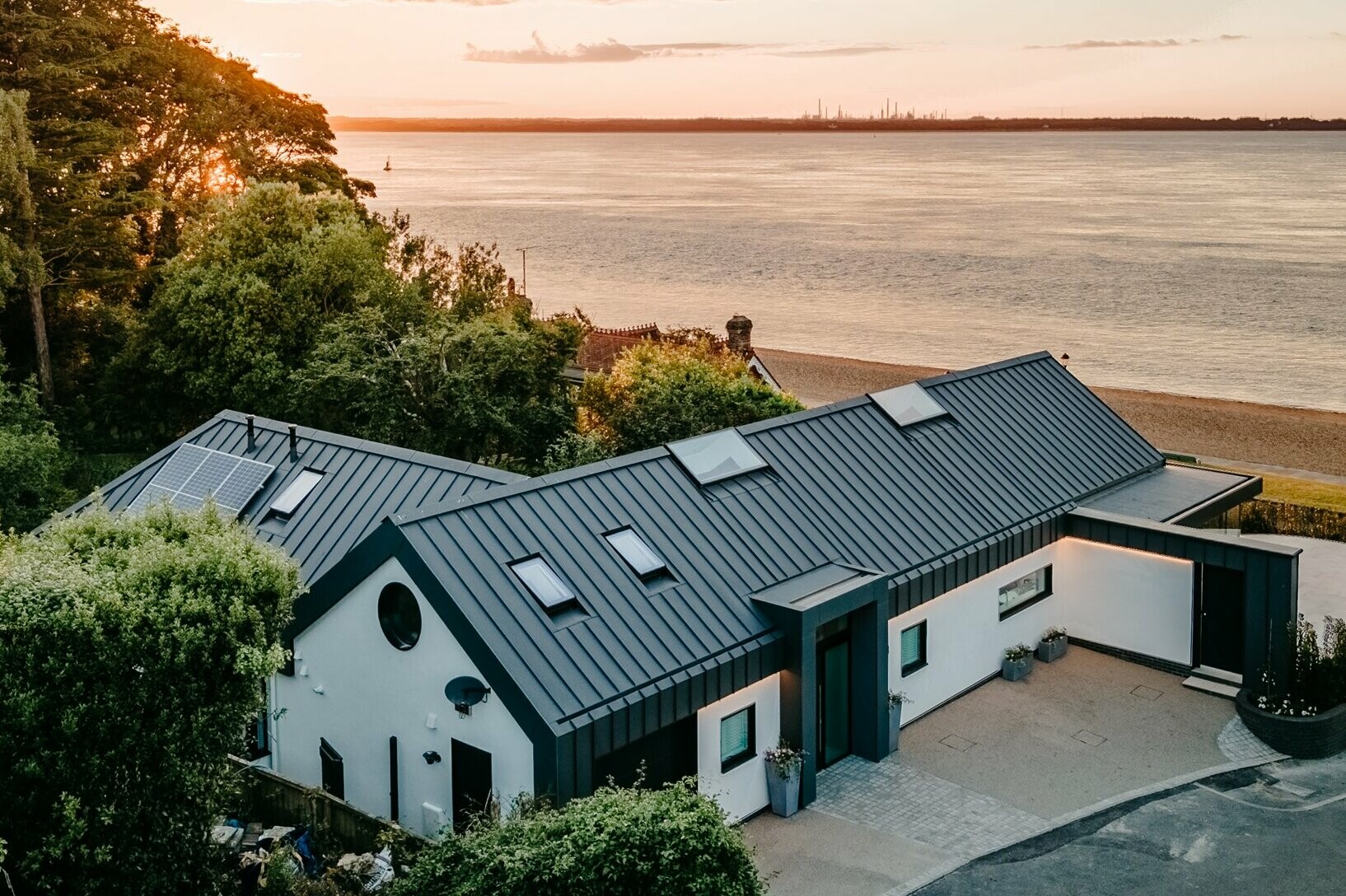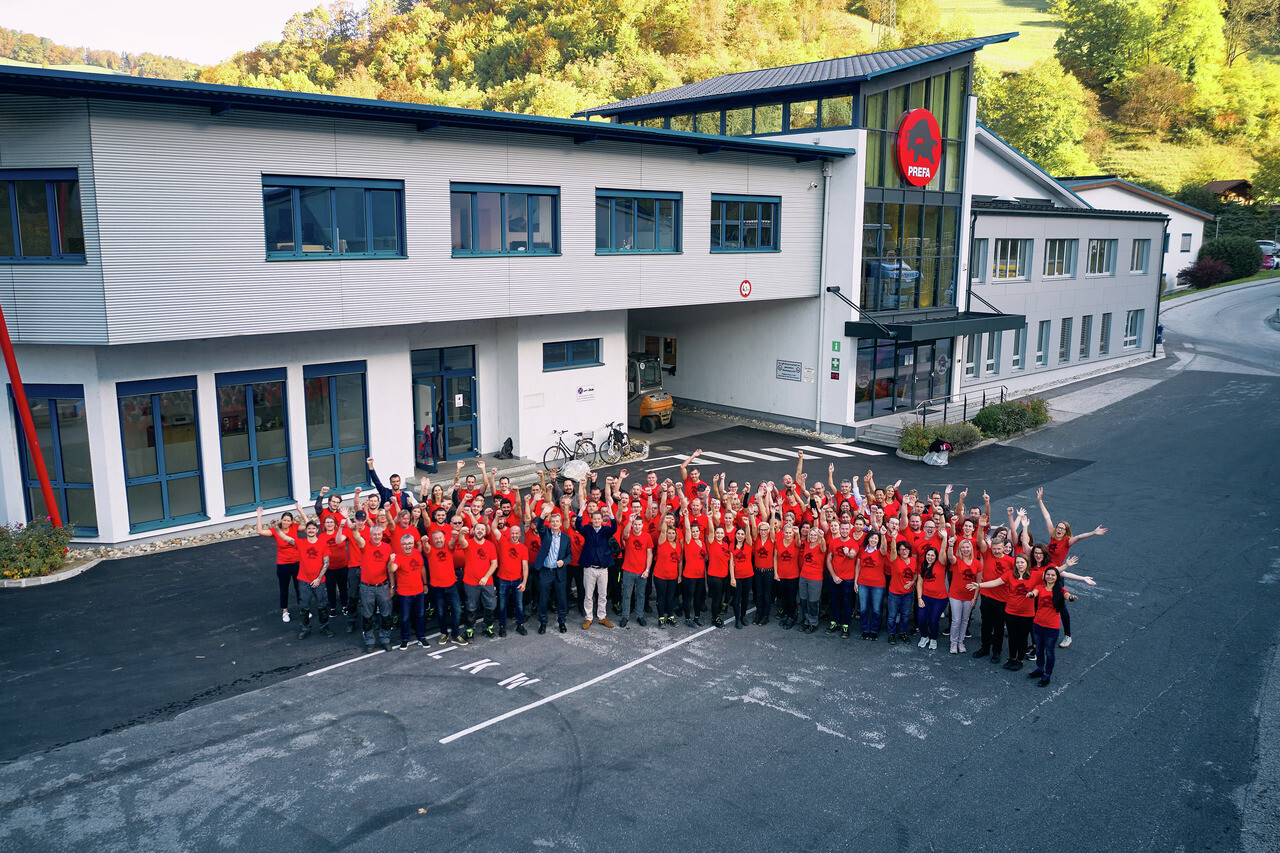A third of the WU campus is clad in PREFA
Praise after the opening of the WU Executive Academy at the west entrance to the new WU Campus in autumn last year came thick and fast: the building was called the “black pearl” by some, the “hall of mirrors” by others and even the Rubik’s cube – the magic cube among the buildings. The Spanish architects NO.MAD Arquitectos in Madrid were responsible for the planning. Vasko + Partner Ingenieure in Vienna carried out the on site realisation in cooperation with DI Reinhard Muxel. An aluminium mirror façade of around 4.500 m2 was installed on the six-storey building.
Choice of colour as a flagship of technological progress
The company PREFA Aluminiumprodukte GmbH has been responsible for the highlight of innumerable architectural projects. “Nevertheless, the WU Executive Academy on the WU Campus presented a very special challenge, because the architects clearly focussed on the intended utilisation of such a special building and its optical appearance. The choice fell on the large lightweight aluminium composite panels designed in a special colour tone with an exceptional gloss finish. The visual effects are impressive; the whole façade is designed in graduations ranging from opaque to translucent and reflects the sky and the natural environment. The building fits perfectly into its surroundings”, is how the PREFA project developer Michael Bayr describes the building.
Elaborate cassette system in a special colour tone
Two key parameters made the optical effects possible: the special façade construction and the special colour tone. Aluminium composite panels are normally riveted or screwed to the substructure. But this was not the case with building of the Spanish architects. A cassette design was chosen. A total of 400 cassettes were produced – the largest one measuring 4 x 1.20 meters. “Realisation of the desired optics of the building was only possible with this elaborate system. Each individual cassette was specially cut and milled and then mounted on a special construction to be aligned flush with the windows. This was without doubt one of the most ambitious projects ever undertaken by PREFA in Austria”, says Bayr.
The development and realisation of the desired colour tone was no less of a challenge. “The aim was to work together with the planning architects NO.MAD to find a surface whose gloss level came as close as possible to that of the mirrored glass areas while at the same time offering good values with regard to the expected degree of soiling. After trying out several samples we decided on the special product jet black RAL 9005 with a 50% gloss level”, explains the architect Reinhard Muxel. Planning with the architects began in spring 2011 and the building itself was completed at the end of 2013. “It was the desired colour and its gloss level in particular that proved the greatest challenge for us. But we are proud that we were able to supply this prestige object to the full satisfaction of all concerned”, says Bayr.
Japanese Architect decides in favour of PREFA
A second building constructed on the WU Campus with a PREFA façade was the Building for Departments and External Service Providers from the Japanese architects Hitoshi Abe, Sendai. Again the choice for the 12,000 m2 façade fell on aluminium composite panels. “In this case, however, standard colours from our extensive colour range were used. The black and white composite panels were mounted vertically and slightly rounded”, Bayr goes on to say pointing to a third building with a PREFA façade right next to the WU Campus. “We used rounded corrugated aluminium for the façade cladding of the Viennese Trade Fair Hotel years ago. You could almost say: Prater is firmly in PREFA hands.”
Focus on ecology and sustainability
It is not only the aesthetics of the façade and the visual effects of both buildings that are so impressive, three key basic architectural principles of the clients have also been combined here: a constructive method that is economical, ecological and socially sustainable! Top priority was given to minimising life-cycle costs and to a high degree of durability of the selected construction and materials. "This is where we scored points with our weather-resistant, sturdy, rust-proof, lightweight products that can be used creatively”, says the PREFA consultant Bayr.
The 4-mm thick aluminium composite panels that are suitable for both inside and outside use can be mounted flat or rounded. In cross-section the high-tech sandwich consists of a 3 mm LDPE polyethylene core with protective foil and two 0.5 mm high-quality dual-layer stove-enamelled aluminium elements. “The composite panels in particular are better suited for such individual projects than any other system currently to be found on the market”, concludes Bayr. So PREFA has played a key role in realising the ideal conditions for the thousands of students on the WU Campus for life-long learning!
PREFA at a glance PREFA Aluminiumprodukte GmbH has been operating successfully throughout Europe for over 65 years now with the development, production and marketing of aluminium roof and façade systems. The PREFA Group has a total of 380 employees, including 180 in Austria. The more than 4,000 high-quality products in its portfolio are manufactured exclusively in Austria and Germany. PREFA is part of the corporate group of the industrialist Dr. Cornelius Grupp that employs over 6,000 people worldwide in its more than 30 production locations.
Recommendation from the architects:
“Apart from the high demands on visual appearance, the great challenge for the façade cladding was to find a panel whose mounting would remain invisible and that could be installed flush with the windows. By fixing the cassettes from the rear we were able to design the folds on the reverse side freely. Depending on where the panels are installed, they are sometimes different on all four sides. This meant we were flexible where the connections to the windows were concerned but were still able to realise the rear-ventilations cross-sections required by building physics as well as the driving ran drainage – despite the changing direction of the panels.”









